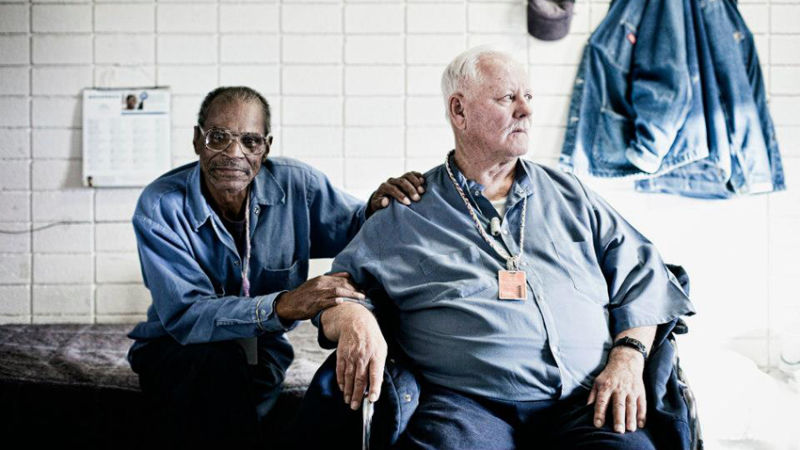In July, President Obama announced plans to commute the sentences of 46 nonviolent inmates, bringing the number of early releases he’s granted to 89. Yet advocates for prison reform will not be seeing the end of the prison industrial complex anytime soon. U.S. penitentiaries continue to be overcrowded with more than a whopping 7 million inmates housed in the country’s 4,575 prisons (a highly disproportionate number of black men and other people of color among them).
Within this prison population is a growing number of elderly men and women; outdated and not always appropriate three-strikes laws land many felons behind bars for the duration of their lives, costing tax payers roughly $60,000 each year for each inmate needing necessary medical and end-of-life care while incarcerated.
A chilling, complicated and ultimately heavy exhibit of photographs of some of these elderly prisoners, taken by Ron Levine and his Prisoners of Age project, is on display at Alcatraz through Dec. 2015.
Levine began photographing inmates in the U.S. and Canada in the mid-1990s and subsequently released a photography book that takes an up close and personal look at men and women serving time for everything from robbery, drug possession and running gambling houses, to murder, sex crimes and manslaughter.
Of the stories that accompany the photographs are those of survivors of domestic violence, addicts and those who willingly and intentionally committed murder or hate crimes with little to no regret.



